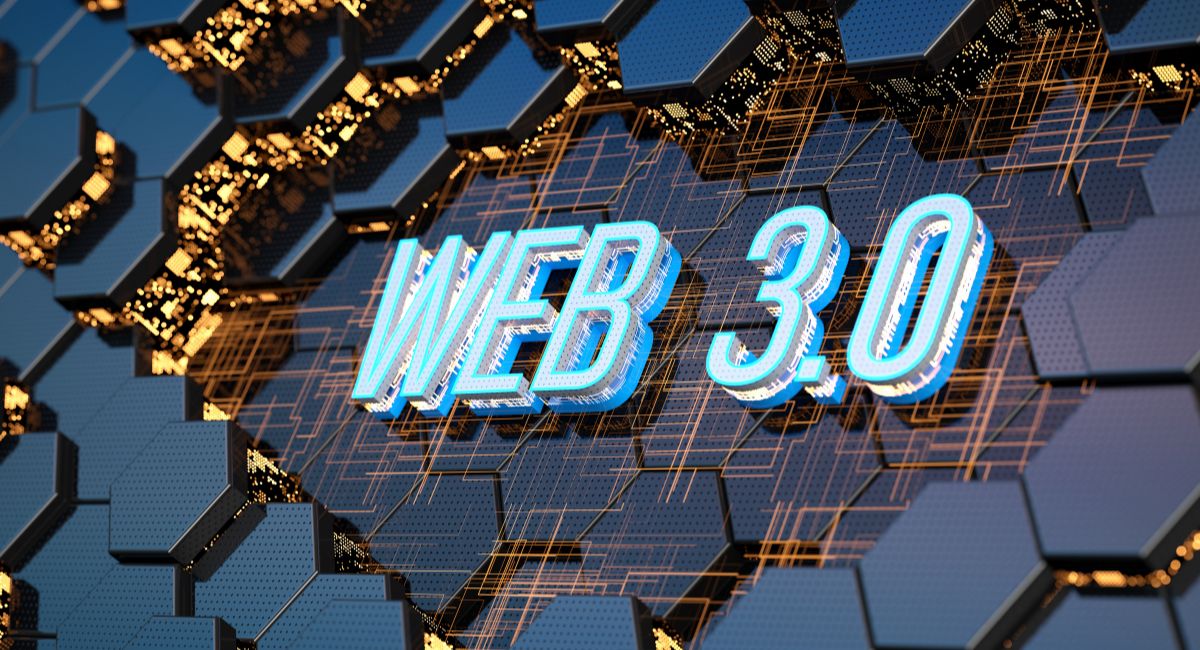From Web 3.0 To Metaverse: Top 10 Digital Themes Defining Our Evolution
The evolution of the internet has led to the development of Web 3.0, a new era of the internet that is more decentralized, secure, and user-focused. Web 3.0 is the foundation for the Metaverse, a virtual world that is rapidly evolving and transforming how we interact with each other, conduct business, and access information. The Web 3.0 to Metaverse is writing history in the current times with its evolution in the digital frontier.
Here are the top 10 digital themes defining our evolution from Web 3.0 to Metaverse:
- Decentralization: One of the defining characteristics of Web 3.0 is decentralization. This means that there is no central authority controlling the internet, and users have more control over their data and online experiences. Decentralization is also a key feature of the Metaverse, as it allows for more democratic participation and governance.
- Blockchain Technology: Blockchain technology is the backbone of Web 3.0, and it is a key component of the Metaverse. Blockchain technology provides a secure and transparent way to store and transfer information, making it a critical tool for creating trust and accountability in the digital world.
- Cryptocurrencies: Cryptocurrencies, such as Bitcoin and Ethereum, are becoming increasingly popular as a form of decentralized currency. Cryptocurrencies are also being used in the Metaverse as a way to facilitate transactions and incentivize participation.
- Virtual Reality: Virtual reality (VR) technology is a key enabler of the Metaverse, allowing users to experience a fully immersive digital environment. VR technology is also being used to enhance Web 3.0 applications and create new opportunities for collaboration and communication.
- Artificial Intelligence: Artificial intelligence (AI) is being integrated into Web 3.0 applications and the Metaverse to provide more personalized experiences and improve decision-making. AI can also be used to automate tasks and improve efficiency.
- Digital Identity: Digital identity is becoming increasingly important in Web 3.0 and the Metaverse. Digital identity allows users to control their online personas and establish trust in the digital world. This is essential for creating a secure and inclusive virtual environment.
- Internet of Things: The Internet of Things (IoT) is a network of interconnected devices that are able to communicate with each other. The IoT is being used to enhance Web 3.0 applications and create new opportunities for automation and data collection. In the Metaverse, the IoT can be used to create smart, interconnected virtual environments.
- Open Source: Open source software is becoming more prevalent in Web 3.0 and the Metaverse. Open source software allows for more collaboration and innovation, and it is also more secure and transparent than proprietary software.
- User Experience: User experience (UX) is a critical component of Web 3.0 and the Metaverse. As users become more empowered and have more control over their online experiences, UX becomes increasingly important. UX design is also essential for creating immersive and engaging virtual environments.
- Sustainability: Sustainability is becoming an important consideration in Web 3.0 and the Metaverse. As the digital world continues to grow and evolve, it is essential to consider the environmental impact of our online activities. This includes reducing energy consumption and carbon emissions, as well as promoting responsible use of digital resources.
Also, read – Building A Career In Metaverse Gaming: Tips And Strategies For Success
Top 10 examples of Web 3.0 to the Metaverse
Sure, here are some examples of how Web 3.0 is paving the way for the Metaverse:
1/ gm! allow me to re-introduce myself.
my name is saf and i’m a creative from toronto. i create digital art with themes of colour and movement, inspired by my south asian culture. i have a mission to increase positive representations of women who look like me in web3. pic.twitter.com/No2qlLAxpQ
— saf ☻ (@sapherapeters) August 24, 2022
- Decentralized Finance (DeFi) – DeFi protocols are powered by blockchain technology and enable users to engage in decentralized financial activities such as lending, borrowing, and trading without the need for intermediaries. These protocols are a key building block of the Metaverse, enabling users to earn, spend, and exchange digital assets within virtual worlds.
- Non-Fungible Tokens (NFTs) – NFTs are unique digital assets that are secured on a blockchain. They allow creators to monetize their digital creations such as art, music, and virtual real estate. NFTs are a key component of the Metaverse, enabling users to own and trade virtual assets.
- Virtual Reality (VR) and Augmented Reality (AR) – VR and AR technologies are evolving rapidly, enabling users to immerse themselves in virtual worlds and interact with digital objects and environments. These technologies are essential for the creation of immersive and engaging Metaverse experiences.
- Artificial Intelligence (AI) – AI technologies such as machine learning and natural language processing are key to creating intelligent virtual assistants and chatbots that can interact with users within virtual worlds. AI can also be used to create lifelike virtual avatars and NPCs that can enhance the realism of the Metaverse.
- Interoperability – Interoperability between different blockchain protocols is essential for the creation of a seamless and connected Metaverse. Projects such as Polkadot and Cosmos are working to enable interoperability between different blockchains.
- Gaming – Gaming has always been at the forefront of technological innovation and is a driving force behind the development of the Metaverse. The gaming industry is constantly pushing the boundaries of what is possible in terms of graphics, gameplay, and social interaction.
- Social Media – Social media platforms such as Facebook and Twitter are evolving rapidly to enable more immersive and interactive experiences for users. These platforms are a key component of the Metaverse, enabling users to connect with each other and engage in social activities within virtual worlds.
- Blockchain Scalability – Scalability is a major challenge for blockchain technology, but projects such as Ethereum 2.0 and Polkadot are working on solutions to enable faster and more efficient blockchain transactions. This is essential for the creation of a Metaverse that can support millions of users.
- Web3 Browser – Web3 browsers such as Brave and MetaMask are essential for accessing decentralized applications and interacting with blockchain-based protocols. These browsers enable users to connect to the Metaverse and interact with digital assets and virtual environments.
- Cryptocurrency – Cryptocurrencies such as Bitcoin and Ethereum are the foundation of the blockchain ecosystem and enable users to transact and exchange value within virtual worlds. Cryptocurrencies are a key component of the Metaverse, enabling users to buy, sell, and trade digital assets within virtual worlds.
Conclusion:
From decentralization to sustainability, the digital themes defining our evolution from Web 3.0 to the Metaverse are diverse and complex. As we continue to build a more decentralized, secure, and user-focused internet, it is essential to consider these themes and their implications for our digital future. By embracing blockchain technology, virtual reality, artificial intelligence, digital identity, and open source software, we can create a more inclusive and innovative digital world. Additionally, by prioritizing user experience and sustainability, we can ensure that the Metaverse and Web 3.0 are designed.
Stay informed with daily updates from Blockchain Magazine on Google News. Click here to follow us and mark as favorite: [Blockchain Magazine on Google News].
Get Blockchain Insights In Inbox
Stay ahead of the curve with expert analysis and market updates.
latest from tech
Disclaimer: Any post shared by a third-party agency are sponsored and Blockchain Magazine has no views on any such posts. The views and opinions expressed in this post are those of the clients and do not necessarily reflect the official policy or position of Blockchain Magazine. The information provided in this post is for informational purposes only and should not be considered as financial, investment, or professional advice. Blockchain Magazine does not endorse or promote any specific products, services, or companies mentioned in this posts. Readers are encouraged to conduct their own research and consult with a qualified professional before making any financial decisions. The featured image used is just a creative depiction of the title and it does not intend to hurt sentiments of any person or institution. If it hurts anyone sentiments, please do not hesitate to reach out to Blockchain Magazine.

 Bitcoin
Bitcoin  Ethereum
Ethereum  XRP
XRP  Tether
Tether  Solana
Solana  USDC
USDC  Dogecoin
Dogecoin  Cardano
Cardano  Lido Staked Ether
Lido Staked Ether  TRON
TRON  Wrapped Bitcoin
Wrapped Bitcoin  Chainlink
Chainlink  Wrapped stETH
Wrapped stETH  Avalanche
Avalanche  Sui
Sui  Stellar
Stellar  Toncoin
Toncoin  Shiba Inu
Shiba Inu  Hedera
Hedera  LEO Token
LEO Token  Hyperliquid
Hyperliquid  Litecoin
Litecoin  Bitget Token
Bitget Token  WETH
WETH  USDS
USDS  Polkadot
Polkadot  Bitcoin Cash
Bitcoin Cash  Ethena USDe
Ethena USDe  Wrapped eETH
Wrapped eETH  MANTRA
MANTRA  Uniswap
Uniswap  Ondo
Ondo  Pepe
Pepe  Monero
Monero  WhiteBIT Coin
WhiteBIT Coin  Aave
Aave  NEAR Protocol
NEAR Protocol  Mantle
Mantle  Official Trump
Official Trump  Aptos
Aptos  Dai
Dai  Internet Computer
Internet Computer  Ethereum Classic
Ethereum Classic  Bittensor
Bittensor  OKB
OKB  Cronos
Cronos  POL (ex-MATIC)
POL (ex-MATIC)  Gate
Gate 




